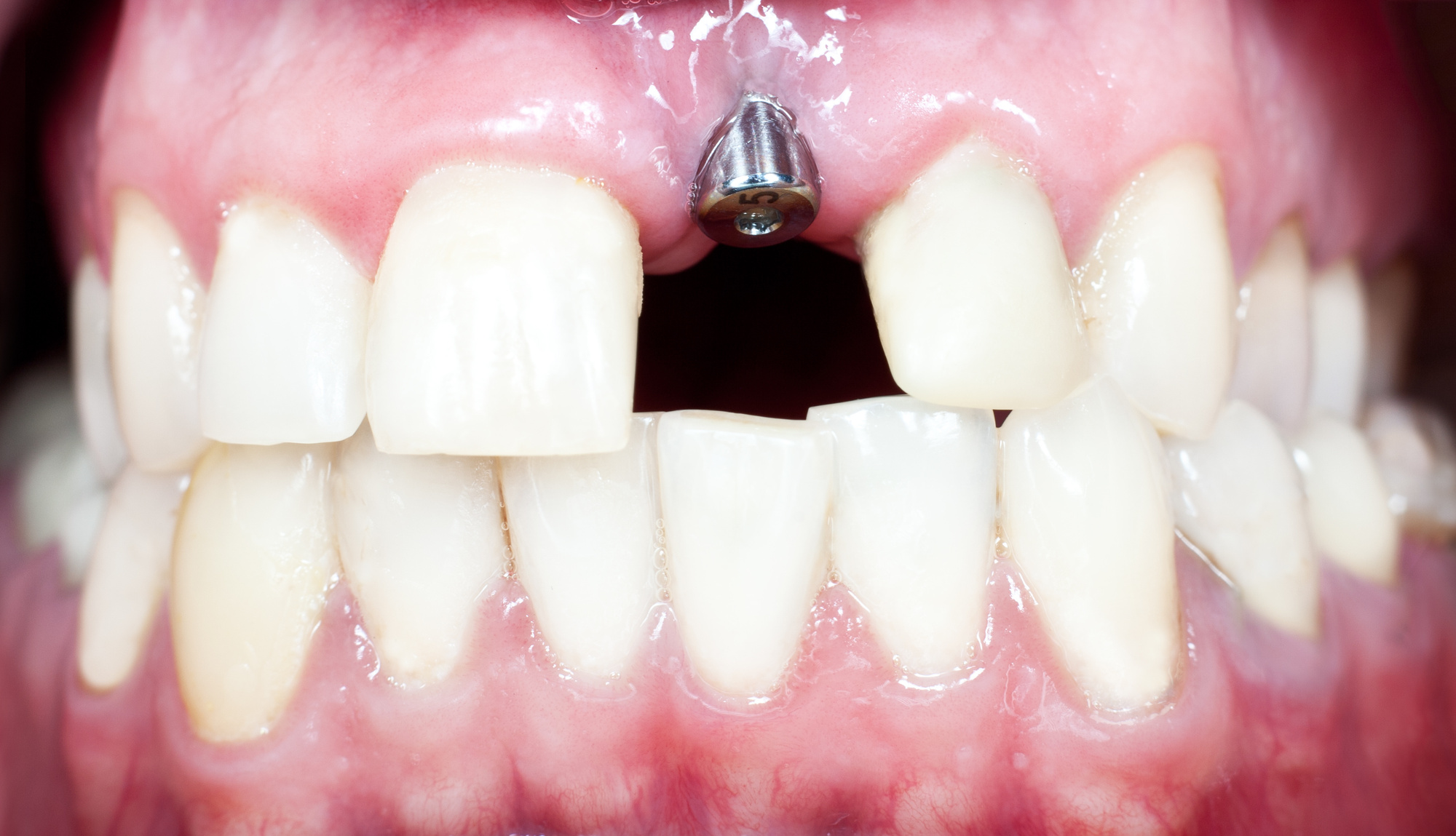On average, adults aged between 20 and 64 have 25.5 teeth. But a complete set should total 32 teeth. So that’s a lot of missing teeth!
Those 6 or 7 missing teeth could have been lost to decay, injury, or gum disease. Sometimes, an adult tooth doesn’t grow to replace a baby tooth. Occasionally, non-mouth-related illnesses cause tooth loss.
No matter the reason, losing a tooth can jolt your confidence. But thankfully, there are numerous single-tooth replacement options that will get you smiling again.
We explore them all below.
Dental Implants
A dental implant is the go-to solution for replacing a missing tooth. This procedure is popular because it’s the most natural and permanent option for single-tooth replacement.
It involves surgically placing a titanium post into the jawbone. This acts as an artificial tooth root. The implant will take some time to integrate with the bone—up to half a year.
Once that happens, you’ll return to the dentist’s chair to attach the crown. The dental crown is carefully crafted to mimic the look of your existing teeth.
However, this lengthy process also makes dental implants the most expensive choice.
Most dentistry practices are well-versed in this procedure. For example, check this dental implants service page, which discusses the ins and outs of the process and how to determine whether you’re a good candidate.
Dental Bridge
Dental bridges differ from implants in that they don’t require surgery.
Instead of implanting a crown directly into the jawbone, your dentist will place dental crowns on either side of the missing tooth. Then, they’ll fill the gap with a false tooth, called a pontic, supported by the two crowns on either side.
The benefit of a dental bridge over other options include:
- Reinstating the proper alignment of teeth
- Promoting even distribution of bite forces
- Reestablishing optimal chewing functionality
Plus, it looks entirely natural! So you can head back out into the world without anyone knowing your tooth was ever missing.
Removable Partial Denture
Another more versatile option over pricey single-tooth implants is a removable partial denture.
When you think of dentures, you probably envision the full set of teeth sitting in a glass of cleaning solution by the bedside. Rest assured, this type of denture is nothing like that! Instead, this prosthetic dental device replaces a single tooth.
Basically, it comprises a false tooth attached to a plastic base. Tiny metal clips attach the denture to the neighboring natural teeth. The tooth is carefully crafted to match your existing teeth so it won’t appear fake.
Since it’s removable, it’s easy to keep clean. Plus, some people prefer this as a non-invasive alternative to bridges or implants.
Maryland Bridge
A Maryland bridge (sometimes called a resin-bonded bridge) is among the lesser-known tooth replacement options. But if you prefer more conservative dental interventions, this could be the right option for you.
Similarly to a traditional bridge, the Maryland bridge involves securing a false tooth permanently in your mouth using neighboring teeth. However, unlike the standard bridge, this option doesn’t include crowns. Instead, your dentist will attach the false tooth using metal or porcelain “wings.”
What people find most attractive about the Maryland bridge is that there’s no damage to your existing teeth. However, you still get a permanent solution, which a denture or flipper (below) doesn’t provide.
Flipper
If you’re replacing a single tooth quickly, you might want to consider a flipper.
A flipper is a temporary, removable denture. The frame is typically made of acrylic, and it has a false tooth attached to it.
Flippers are affordable and quick to manufacture but not as durable or comfortable as other replacement options. However, they can be used as an interim solution while, for example, you save up for a more permanent procedure.
Orthodontic Treatments
In rare cases, a dentist may recommend one of a variety of orthodontic treatments instead of single tooth replacement. This involves moving neighboring teeth (usually preceding tooth replacement) or using some kind of very temporary implant option.
Space Creation
Sometimes, neighboring teeth shift and close the gap a missing tooth creates. Dentists might choose to use braces or clear aligners to move the adjacent teeth away from each other gradually.
This happens before they consider tooth replacement options, creating room for the replacement tooth.
Uprighting
Sometimes, a neighboring tooth may have tilted or tipped. It fills the space where the missing tooth should be.
A dentist can use orthodontic treatments to right the crooked tooth, returning it to its proper position. Again, this creates the space needed to then replace the tooth.
Dental Implant-Supported Orthodontics
Has your dentist recommended a dental implant to solve your single-tooth replacement predicament? Then, you might be in for some pre-procedure orthodontic work, too.
In most cases, your dentist will examine your existing tooth alignment and decide if any neighboring teeth need to be moved or even pulled out. This will ensure the implant feels comfortable and looks natural.
Temporary Anchorage Devices
Temporary Anchorage Devices, or TADs, are mini-screws or mini-implants placed in the jawbone temporarily by your orthodontist. They help to anchor a tooth during orthodontic treatment.
Most often, they’re used to move neighboring teeth into place. As with many of the above procedures, this creates the necessary space for the replacement tooth.
Explore All Your Options for Single-Tooth Replacement
Are you hoping to discover the ideal solution for single-tooth replacement? Then, you need to explore the various options outlined in this blog article with your dentist.
Generally, single-tooth replacement is tailored to individual needs. Your dentist is aiming to create a natural-looking tooth that seamlessly integrates with your existing smile.
Dental implants are the most permanent solution. Dental bridges are popular because they integrate with neighboring teeth. Although considered temporary, removable partial dentures and flippers are affordable for most people.
If you’re seeking more dental advice, read the other helpful articles on our blog.





Be First to Comment